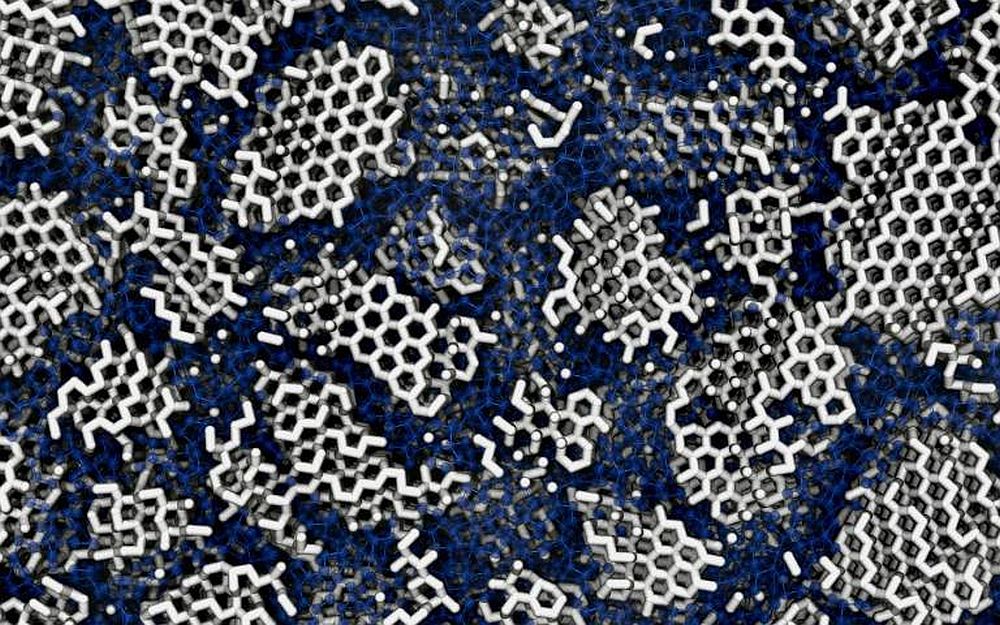
[Image above] The LEAP engine developed by GE Aviation contains SiC/SiC composite high-pressure turbine shrouds. Credit: Pixabay
Just as running in cool weather can improve your performance, airplanes also can experience improved efficiency when taking off in colder temperatures.
The secret to an airplane’s improvement is the fact that cold air is denser than hot air. Thus, when aircraft engines pull in cold air, they are pulling in a greater mass of air with each stroke, which allows them to generate more power.
However, the opposite is also true—hotter air is less dense, and thus provides engines with less mass with which to generate power. And as average temperatures around the world continue to climb higher every year, current airplanes are becoming less efficient in the hotter climate.
Fortunately, the temperature of outside air is not the only factor determining an aircraft engine’s efficiency—the temperature of air inside the engine plays a role as well.
When air is pulled into an engine, it mixes with fuel and ignites to generate a high-temperature flow, which escapes out the back of the engine and thrusts the aircraft forward.
The higher you raise the temperature of the air during combustion, the more efficient the fuel consumption will be. In cold weather, raising the temperature during combustion is fairly easy. But to retain that same temperature differential when pulling in hot air, you need to raise the air to ultrahigh temperatures, which many current engines made of metal alloys cannot withstand.
In recent years, engineers have been investigating the design of aircraft engines made of ceramic matrix composites (CMCs). CMCs can withstand much higher temperatures than metal alloys and thus allow for ultrahigh-temperature combustion.
Silicon carbide fiber-reinforced silicon carbide matrix composites (SiC/SiC) are one of the main CMCs being investigated for aerospace applications. Shaping SiC/SiC composites can be challenging, however.
If traditional machining processes are used, the material’s ultrahigh hardness can cause severe tool wear. In addition, its high brittleness can lead to cracks, pits, fiber damage, interface debonding, and other defects on the machined surface.
Studies on other processing methods such as water jet machining, ultrasonic processing, and electric discharge machining have revealed pros and cons for each. For example, water jet machining tends to cause fiber pull-out on the composite’s surface, and the accuracy of ultrasonic machining is limited by the amplitude.
Laser ablation, in which material is removed via irradiation with a laser beam, has also been explored. However, these processes commonly result in poor surface quality due to the laser inducing thermal stress concentration that leads to fiber breakage, microcracks, and interface delimitation.
In a recent paper, researchers from the Leibniz Institute of Surface Engineering in Germany and the Qingdao University of Technology in China explored the potential of yet another technique for machining SiC/SiC composites—plasma etching.
Plasma etching, also called dry etching, uses a high-speed stream of ionized gas (plasma) to remove material from a solid surface. The technique is well established in the electronics industry, where manufacturers have used it to fabricate integrated circuits for almost 50 years.
Compared to laser ablation, plasma etching is a gentle process that can avoid damaging the SiC/SiC composite structure. “Therefore, we propose the utilization of a laser-induced reactive plasma for removing the SiC/SiC composite material without damage of the composite structure,” the researchers write.
They secured SiC–SiC composite samples from a Chinese fiber company, which fabricated the fibers via the usual methods of chemical vapor infiltration supported by polymer infiltration and pyrolysis. They clamped the samples onto a ceramic heater in a gas-filled process chamber, where a pulsed femtosecond laser was focused by a lens to produce the plasma for etching.
Based on several microscopy and spectroscopy analyses, the researchers concluded that the SiC/SiC composite could be machined using plasma etching without mechanical damage to the composite’s structure.
However, they did observe “exciting” differences in the surface morphologies of the etched areas depending on the location. For example, fibers in the center of the groove were etched more, reducing their diameter. Fibers that were completely etched through on the sides of the groove formed sharp tips. The researchers attribute these differences to various chemical processes that took place during etching in the gas-filled process chamber, such as oxidation of SiC.
“This new SiC–SiC machining process may pave the way for fixing fabrication defects in SiC–SiC components as the fibres are gently exposed enabling a subsequent additive repair,” they conclude.
The paper, published in Ceramics International, is “Etching of SiC–SiC-composites by a laser-induced plasma in a reactive gas” (DOI: 10.1016/j.ceramint.2021.09.084).
Author
Lisa McDonald
CTT Categories
- Aeronautics & Space


